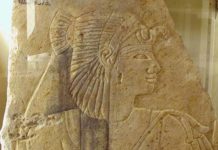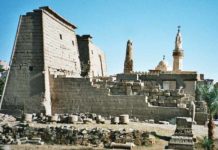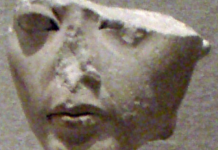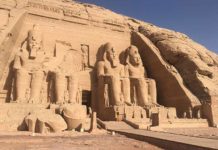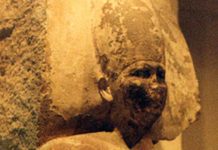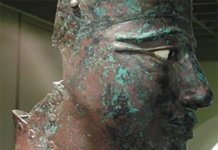The innovative pyramids of ancient Egypt have stood the test of time, as their architects intended, to help usher dead pharaohs into the afterlife, along with their possessions. Over 4,000 years later, the elaborate tombs still stand – although plundered by pyramid robbers – and the people responsible for their construction are still a matter of controversy.
Jews, Ancient Egypt and Mass Exodus
“The stories we hear in Sunday school seem to form the basis for the popular belief that Jewish slaves were forced to build the pyramids in Egypt, but they were saved when they left Egypt in a mass Exodus,” said Brian Dunning. But, according to findings, “no Egyptian record contains a single reference to anything in Exodus; and by the time there were enough Jews living in Egypt to constitute an Exodus, the time of the pyramids was long over.”
Furthermore, says Amihai Mazar, professor at the Institute of Archaeology at the Hebrew University of Jerusalem, “No Jews built the pyramids because Jews didn’t exist at the period when the pyramids were built.” It wasn’t until over 600 years after the last of the large pyramids had been built that Israel came into existence, and over 2,000 years after the Great Pyramid had been completed that Jews are evidenced to have been in Egypt.
The Myth of the Jewish Slave
So where did the myth of the pyramid-building Jewish slaves come from? Herodotus of Greece – “The Father of History” or “The Father of Lies” – inadvertently facilitated the myth in 450 BCE. During his time, creating a good story was more important than adhering to the facts. But the historian took his responsibility seriously, being one of the first to meticulously document his work. He believed that about “100,000 workers” constructed a single pyramid in 30 years – nowhere did he specify Jews or slaves. “And the origin of the idea of Jews building the pyramids remains a mystery.”
Egyptian Paid Laborers Built Elaborate Pyramids
It is now estimated that about 10,000 – 30,000, rather than 100,000, paid workers were responsible for building a single pyramid in ancient Egypt. Local Egyptians from poor families worked on the tombs “out of loyalty to the pharaohs,” said Dieter Wildung, a former director of Berlin’s Egyptian Museum. They were respected and earned the right to be buried near their pharaohs.
In the 1990s graves of the laborers were found by a tourist, who came across what appeared to be a wall but was actually a tomb. Egypt’s archaeology chief Zahi Hawass concluded, “No way would they have been buried so honorably if they were slaves.” Workers built their own tombs with leftover supplies. Hieroglyphics on the inside walls of the tomb indicated that there were bread makers and beer makers among the pyramid laborers, and their bodies were perfectly preserved by dry sand.
The Treatment of Pyramid Workers
The workers were well fed: “laborers working on the pyramids ate 21 cattle and 23 sheep sent to them daily from farms.” They also worked in 3-month shifts. There is evidence that brain surgery had been done on a worker, who went on to live at least two more years. And some lived to old age. Nevertheless, “their skeletons have signs of arthritis, and their lower vertebrae point to a life passed in difficulty.”
But the most undeniable evidence that Egypt’s pyramids were built by paid workers and not slaves is the pyramids themselves: due to a shrinking budget, pyramids gradually got smaller over time. In other words, money paid to pyramid laborers to construct elaborate tombs helped destroy ancient Egypt’s economy.
Today the world recognizes the novelty and intricacy of Egypt’s pyramids: The Great Pyramid of Giza is one of the Seven Wonders of the Ancient World and the United States one-dollar bill includes an Egypt-inspired pyramid. It is only fitting that those who built such masterpieces be given credit after so many centuries of obscurity.



